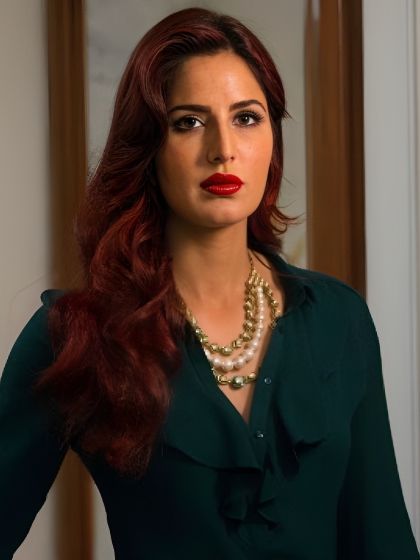Before impulsive bangs, before blonde streaks, before anyone knew what balayage was, there was red hair. If you grew up South Asian, your first hair colour experiment probably came in a box, promising "cherry brown" but delivering everything from burgundy to maroon, auburn to mahogany. And, of course, it left your bathroom smelling like chemicals and maybe a little rebellion, too.
No millennial woman could forget Katrina Kaif’s striking red hair in Fitoor. Director Abhishek Kapoor later explained that her fiery colour mirrored the Chinar leaves of Kashmir, transforming with the seasons, symbolising change, passion, and chaos.
This is our Roman Empire. Not in the meme sense (though yes, we think about it weekly), but in the way it lingers. Red hair isn’t just a beauty trend for South Asians. It’s a rite of passage.
First came the ear piercings, probably against your will. Then, if you were particularly brave, the nose piercing, often sold as "traditional" to sidestep a family argument. Then, one afternoon in your late teens or early twenties, you took the plunge into red hair. That perfect midpoint between obedience and autonomy.
It was the ideal rebellion. Bold enough to feel new, subtle enough to survive family functions. You could still pass for "appropriate" unless the sun caught you the wrong way. Then, it was all over: a crimson halo exposing your inner delinquent.
Before highlights, balayage, or bleach, there was the box dye. No salon appointment, no damage control; just flimsy gloves, an old T-shirt, and a silent prayer it wouldn’t turn purple (it probably did). The shades—cherry, auburn, mahogany—promised transformation on a budget.
That’s why red hair was everyone’s first act of rebellion. No need to big-bad-bleach your hair or justify your decision to an auntie who thought you were “looking like a foreigner” (god forbid). You could always say it was mehendi, and everyone would accept it. You stepped into the sunlight and let the colour do the talking.
Red hair lets you experiment with vanity, dip a toe into self-expression and test the waters of change without a complete transformation. No full breakup, no spiritual crisis, no need for paperwork.
Even now, walk past a pharmacy in Mumbai, Delhi, or any suburban diaspora outpost, and there it is: that same box of dye, still promising impossible glamour in a shade only South Asians understand. Somewhere, a girl is buying it for the first time. Somewhere, a woman is buying it again, nostalgic for the days when red was a soft rebellion.
Because sometimes, the smallest, safest acts of rebellion leave the deepest stains.
And red hair stains everything it touches.
Also read:
Why applying makeup with your fingers isn’t a beauty faux pas
